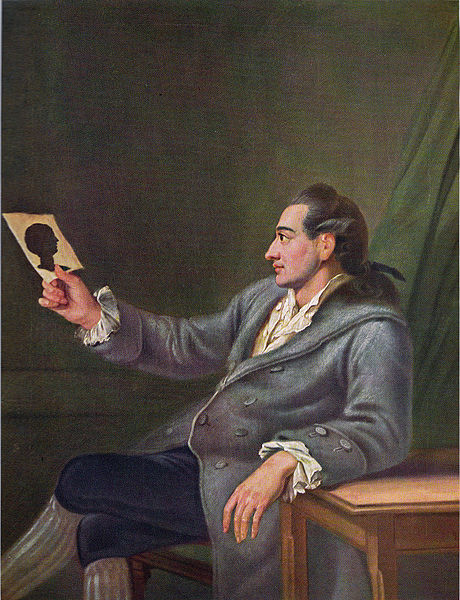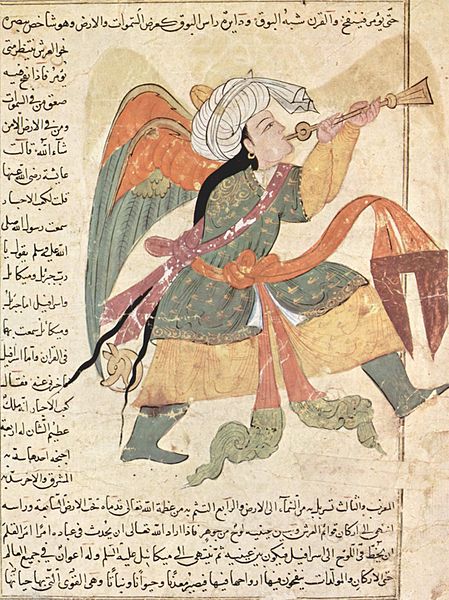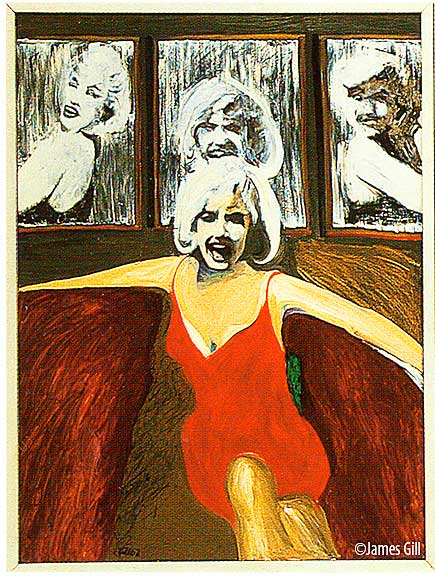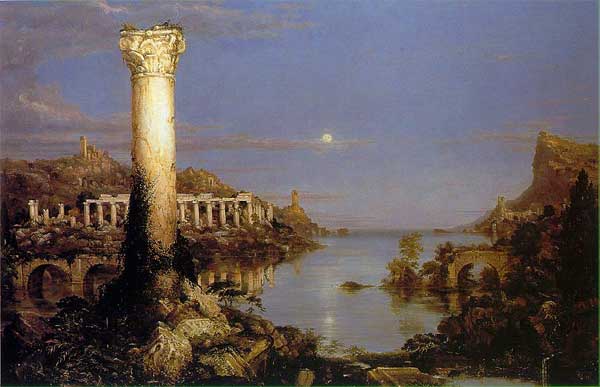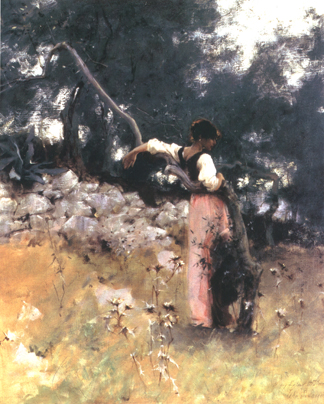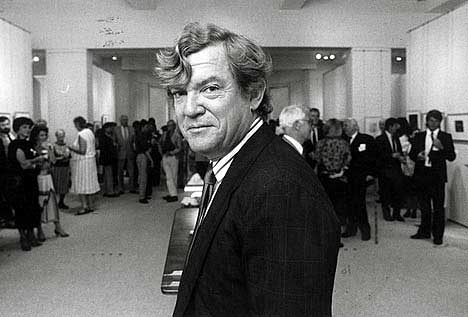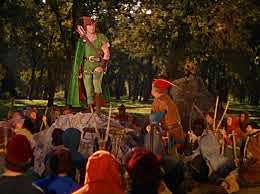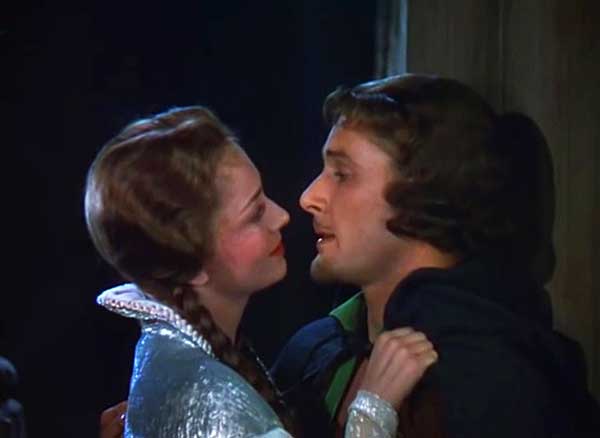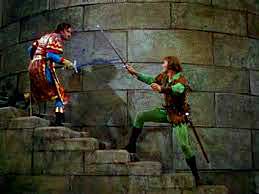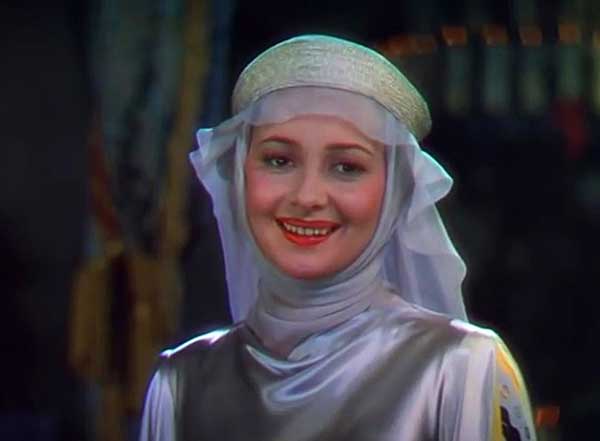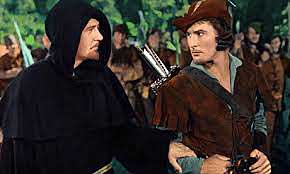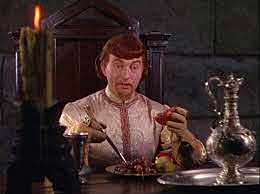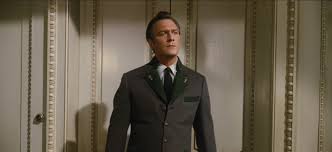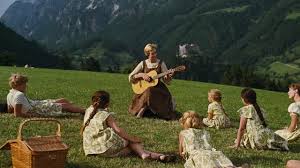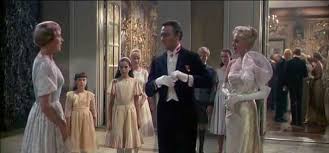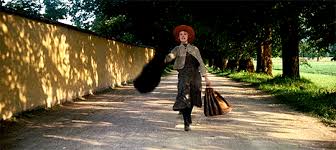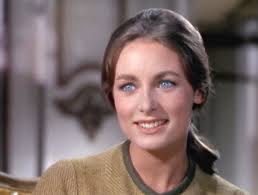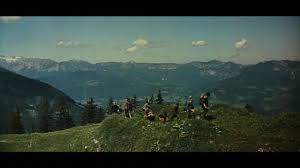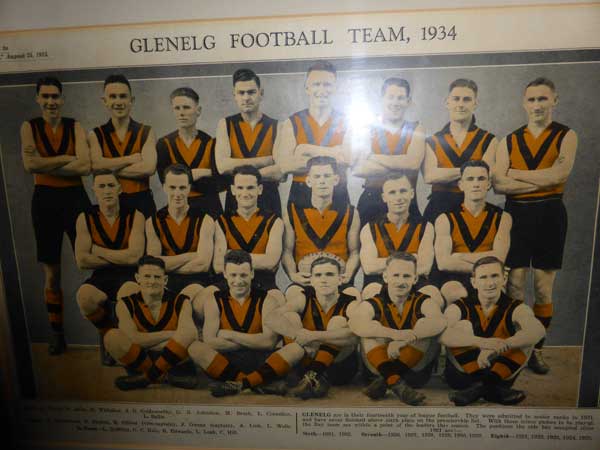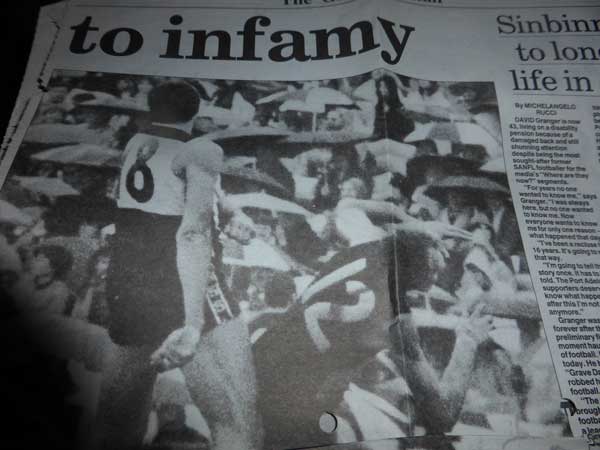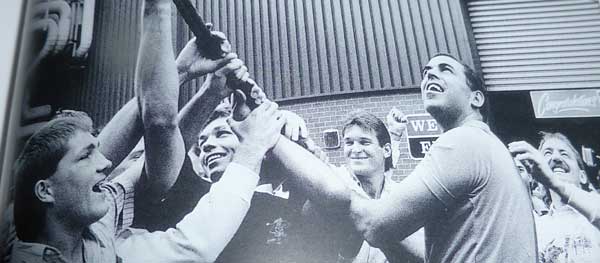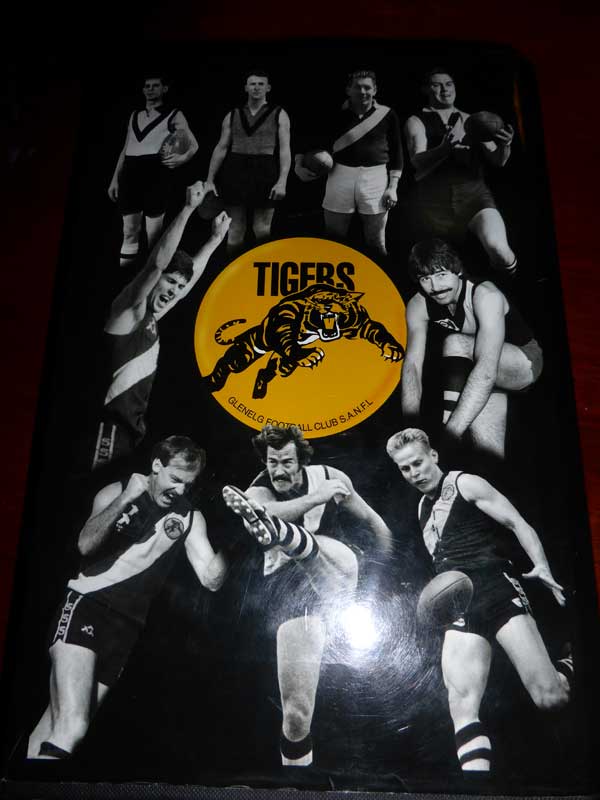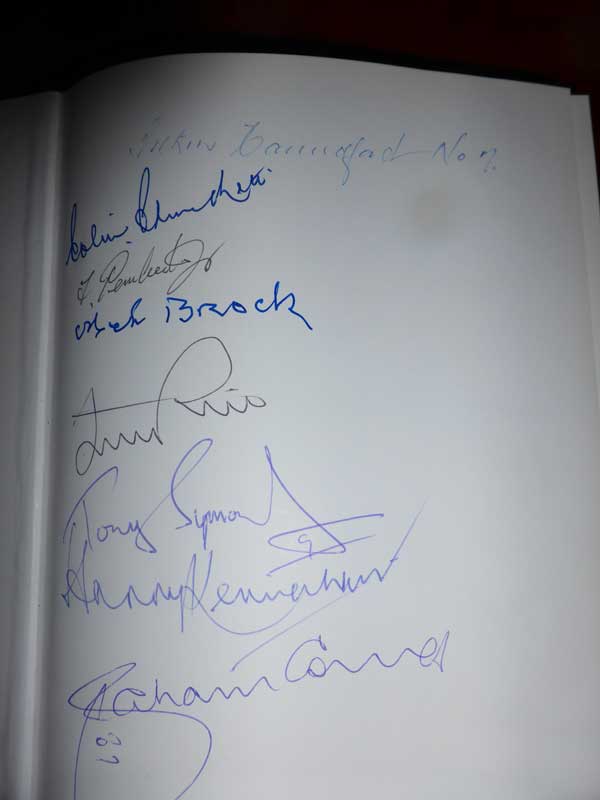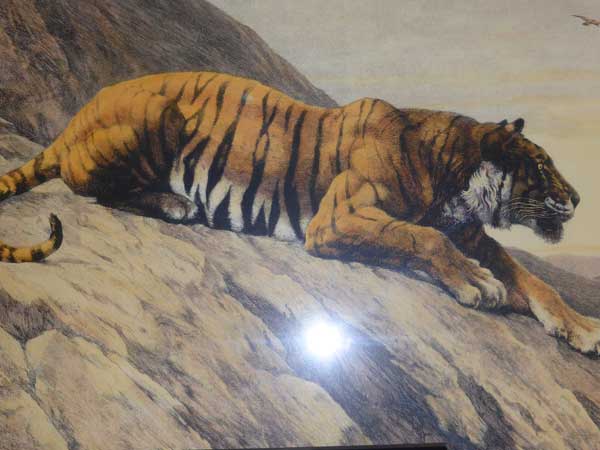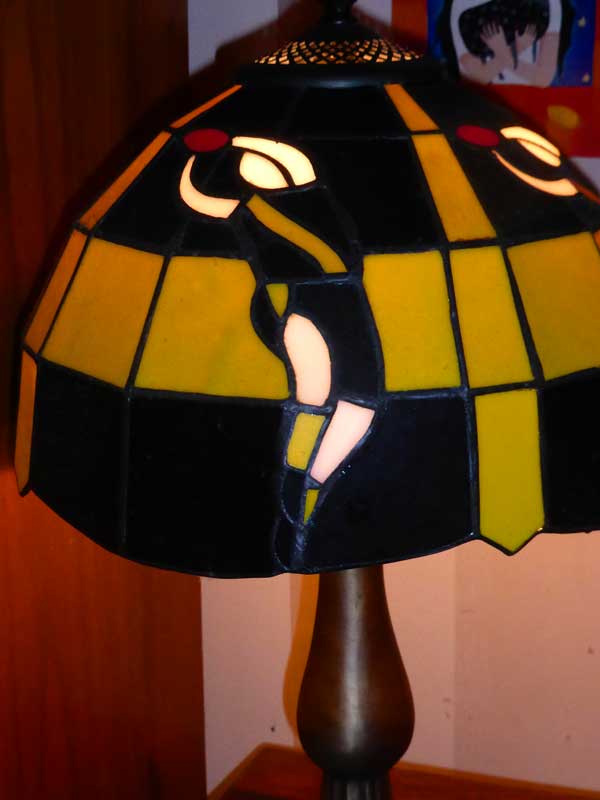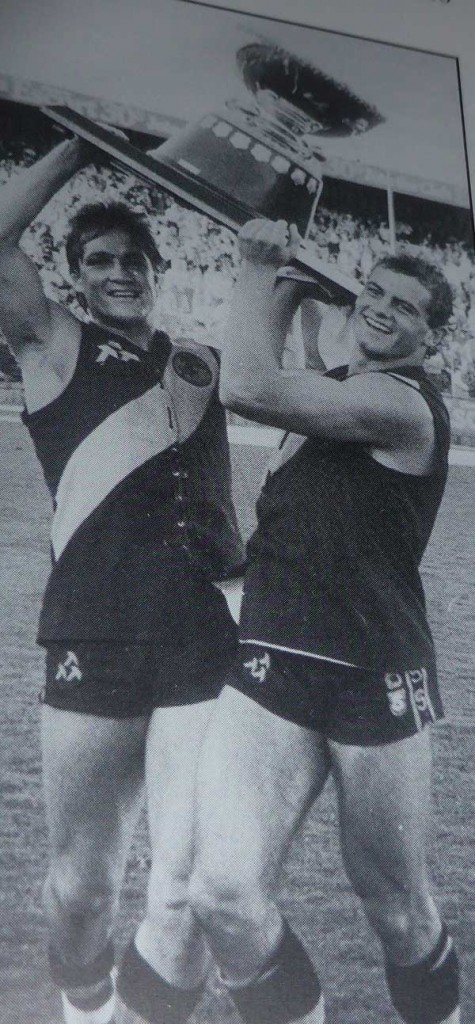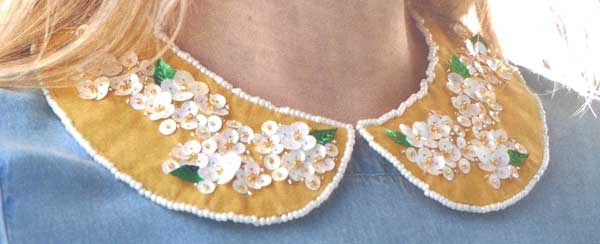The Varnished Culture's Thumbnail Reviews
Regularly added bite-sized reviews about Literature, Art, Music & Film.
Voltaire said the secret of being boring is to say everything.
We do not wish to say everything or see everything; life, though long is too short for that.
We hope you take these little syntheses in the spirit of shared enthusiasm.
Goethe – The Man and His Character
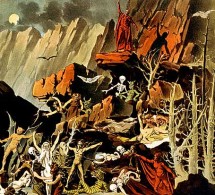
(Joseph McCabe) (1912)
In the years before Kaiser Wilhelm turned the English off anything German, this stodgy but comprehensive life is a good introduction to the Teutonic Shakespeare. From 28 August 1749 through Faust Part I, numerous flings with strait-laced ladies (all lovers of literature), festschrifts in Weimar, an Italian pilgrimage, the search for a Germany, mateship with Schiller, the French Revolution and Faust II, to the last cry for “More light!”, the story carries you along and hopefully leads you to the work. And what work! He is the post-classical bridge to the new literature and he remains a Giant, diminished (if he is diminished) only by neglect.
There will come a day when we go back to Goethe et al, when we discard the urgent and return to the important.
Continue Reading →Israfel
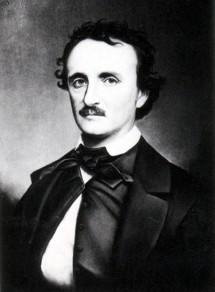
(Hervey Allen) (1926)
The big Pennsylvanian author of the romantic hit Anthony Adverse (apparently the favourite novel of Tony Curtis) obviously admired the lush and gothic, and his long, detailed, overwritten biography of Poe is great fun in a crusty, hoary, adamantine way.
Poe’s life was such as to invite that treatment. His work might best be called ‘patchy’, and his life a tribulation. Harold Bloom, who famously detested Poe’s writing, said “Only outrageous overplaying works with Poe…but [he], as I have glumly acknowledged, is inescapable. To dream everyone’s nightmare has to be genius, which cannot be denied Poe.”* He did grudgingly select Poe’s Israfel for his anthology though:
“Yes, heaven is thine: but this
Is a world of sweets and sours:
Our flowers are merely – flowers,
And the shadow of thy bliss
Is the sunshine of ours.”

Edgar Allan Poe, was born on 19 January 1809, in Boston, the son of two actors. His father left the family in 1810, and his mother died in 1811. He was taken in by a couple who raised him. He was an American author and poet, and literary journal writer. He was a writer of crime stories, mysteries, and is said to have inspired many, including for example, Alfred Hitchcock in the making of suspense films. He was one of the first American writers whose works became popular on the European continent, and more particularly in France. His literary reviews earned him the name “tomahawk man”. His first poetry volume under the pseudonym “the Bostonian” was published in 1827. Sir Arthur Conan Doyle said of Poe’s detective stories that each story “Is a root from which a whole literature developed” and said: “Where was the detective story until Poe Breathed the beath of life into it”. His poem “The Raven” was received well when published in January 1845. Poe wrote “Words have no power to impress the mind without the exquisite horror of their reality”. In his letter to George W. Evelath on 4 January 1848 he wrote “I became insane, with long intervals of horrible sanity”. Poe died 7 October 1849. His attending doctor reported that Poe’s final words were “Lord help my poor soul”. The cause of death is not clearly known, however there were many suggestions, including a possibly physical attack on him, or alcoholism, or cholera or various other diseases.
Continue Reading →The Coldest Winter
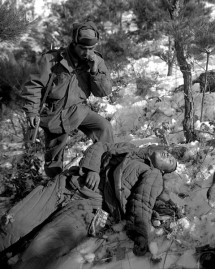
(David Halberstam) (2007)
Through the noise of Vietnam and Iraq, we fail to hear and heed the still reverberating conflict in Korea, under armistice since 1953 but technically open. David Halberstam, in his last book, brilliantly recounts the manoeuvres and ideologies at play, and beyond the recounting of the bloody and appalling battles, informed by a decade’s worth of interviews of the high and the low, and supplemented by excellent maps, shows the political shadows cast by the conflict on American policy, such as the stance vis-á-vis China, only corrected after a generation of isolationism, and the consignment to irrelevance, for almost a decade, of the Democratic Party. True, it is the book of a journalist, not a historian – but a very great example of high journalism.

“Old soldiers never die, they just fade away…”
(Especially those who claim to know ‘the mind of the oriental’ and refuse to salute the President…)
Continue Reading →
American Visions
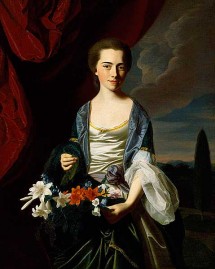
(Robert Hughes) (1997)
Hughes was one of those big, bold, Jesuitical, learned men of the arts whom we sorely need and miss. This book, and the series on which it is based, is crammed with Hughes’ invariably wise, precise and yet loving take on American Art. He took up a role as Time’s art critic in 1970 and those who are old enough to have actually read Time recall his brilliant and generally fair opinions on the world of contemporary art.
This wonderful review is as good as his seminal The Shock of the New but wiser and less hurried. If you want an introduction to American visual art – paint, buildings, statues, etc., this is it. Hughes loved America as any man or woman of intelligence, with a little cash, will love America – full of good people and good things, aching to do good and full of ignorant curiosity.
But he brings an olde worlde sensibility to the new world’s sensitvity and makes something new to shock and delight us. A great book and series – Robert, even though you were on occasion an opinionated nincompoop – we love you, and miss you.
Continue Reading →The Adventures of Robin Hood
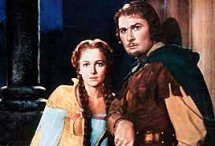
(Dir. Michael Curtiz, William Keighley) (1938)
It might be a wall of corn, but as they say in showbiz, “the colour of corn is Gold”. This is the lushest, most colourful, most joyous blood-and-thunder adventure ever to burst out of Hollywood in the Golden Age, a filmed comic book that puts modern actioners in the shade.
It has been written that Errol Flynn and Olivia de Havilland were very much in unrequited love, and this shines forth in the film. Olivia is pretty as a picture and she glows here, without the treacle-and-vanessa-redgrave emoting she sheds in, say, Gone With the Wind, among others. Flynn is Flynn, that is, boisterous and bumptious and a perfect swashbuckling hero.
There’s stirring music by the very appropriately named Erich Korngold, thrilling action sequences (including a sensational climactic duel between Robin and Guy of Gisbourne) helmed by Michael (Casablanca) Curtiz (co-director William Keighley probably acting mainly as a translator for his Hungarian colleague), vivid and sweeping scenes in Technicolor (southern California standing in for Nottingham during a rare dry summer) and a host of lively supporting heroes, sidekicks and villains.
Historically a bunch of tosh, the film plays as the kind of history we might prefer, but no matter, it lives thanks in part to the oily and wheedling Claude Rains as Prince John, Basil Rathbone as nasty Sir Guy, Alan Hale as little John, Ian Hunter, magisterial as King Richard, and Eugene Pallette as obstreperous Friar Tuck. Even that terrible actress, Una O’Connor, as Bess, Maid Marian’s adoring handmaiden, is kept somewhat in bounds.
This was Warner’s first tilt at the kind of film MGM did so well and it hurtled Flynn into the top rank of stars. Errol’s elegant Australian accent was more palatable, for a heroic role, to Warner Bros (who, in common with the other Hollywood studios, usually cast English actors as villains). He was not a particularly subtle actor, to put it mildly but in the right part, he had the Presence.
So while this is not a 5 star film in The Varnished Culture‘s view, it is a classic and a great entertainment. It also comes even closer to P’s carnal, carnivorous heart by featuring more succulent, dripping, roast meat dishes than any other movie in memory.
[Update: There’s a nice article in the Spectator of 14 November, 2015 by Peter Hoskin, celebrating the 100th birthday of Technicolor (c) , where he writes that as a 12 year old at home in bed with the flu, this film “came on the television at the end of my bed. Nothing had prepared me for this. A Sherwood Forest that was aflame with green..Olivia de Havilland’s oh-so-cherry lips….I cast off the duvet and leapt from the fug. The sickness had gone.”] Continue Reading →The Curse of ”The Sound of Music”
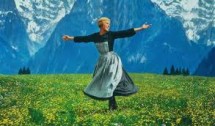
(Dir. Robert Wise) (1965)
We’re sorry, but we can only watch The Sound of Music in 15 minute increments. Any more attracts a risk of type-two diabetes. This cloying, sacchariferous, candied, 174-minute dollop of goo would have received one or less review stars from us, but for the superb cinematography, sweeping over and around the chocolate-box town of Salzburg and its surrounding mountains, and the overall production values, which are first-rate.
The (bizarre and stupefying) success of both the stage musical and the film have led to endless revivals around the globe, the mawkish meld of Nuns, Nazis and warbling infants a seemingly irresistible combo. We are told that there is a perpetual Sound of Music dinner theatre experience, where patrons can wallow in nostalgia and strudel (though not schnitzel with noodles) as a man from Japan plays Captain von Trapp (at least the casting remains faithful to the Axis powers). Intelligent people lap this stuff up, so we at The Varnished Culture are obviously in the minority on this one. As critic Pauline Kael memorably observed at the time of the film’s release, The Sound of Music was “the sugar-coated lie that people seem to want to eat.”
Robert Wise knew a thing or two about editing (just ask Orson Welles) and he could craft a musical film without over-egging the pudding (West Side Story) but here, he seems to have run out of ideas and instead clobbers us with reprise upon reprise, till it feels like another Anschluss would provide something of a relief. Julie Andrews (who was born to play Dorothea Brooke but didn’t) is euphoric and insufferable; Christopher Plummer and the other alleged adults act like statues. The Nazis are as threatening and competent as the Three Stooges. The children all need a damn good thrashing.
As Clive James commented on the happy ending: “Improvising brilliantly, Julie and Christopher get married, enter the children in the Salzburg Festival, and walk to Switzerland under cover of the applause.”
Furthermore, we have a surfeit of quibbles:
- Why does Austria need a navy?
2. The Eidelweiss is an ugly flower, and the ‘olde Austrian folk song,’ that Trapp trills in homage to it, was written by Oscar Hammerstein.
3. When Maria first whirls into view, her nipples taped because of the crispness of the air, it is abundantly clear that she is performing what has come to be known as a Milli Vanilli.
4. (The technically insolvent) Trapp would naturally spurn the Baroness, once Maria bobbed-up in her dress made from curtains. Yeah, right.
5. The Anschluss of 1938 had been (at least) 8 years in the making. The Austrian Chancellor, Dollfuss, was assassinated by Nazi agents in 1934. So why are Maria and the Captain traipsing around Frohnburg Castle and sipping pink lemonade, grinning like beatific idiots, after Hitler has taken charge?
6. Liesl should have used different lyrics to her big number:
“I am sixteen, going on twenty-three,
I’ve been around the block,
Whilst as a rule I’m nobody’s fool
What got me to do this schlock?
I need one even older and wiser
Telling me what to do,
You are the man from MCA Talent
Think I’ll depend on you.”
7. We accept that Mother Abbess bellowed at Maria & Co. (twice) to “Climb Every Mountain”, but why didn’t they just catch a train? No fugitives hike from Salzburg to Switzerland, and no refugees from the Nazis did it via Berchtesgaden!
We added half a star for the appearance of Eleanor Parker (the Baroness) and Richard Haydn (Max Detweiler). They were the only characters with a sense of style, and some actual sense as well. And we did like the Baroness’ attempt to play ball with the kiddies! Yes, she would have made an outstanding Mommie Dearest.
Continue Reading →
The Wagner Operas
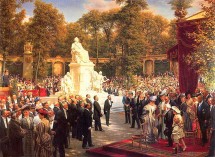
(Ernest Newman)
This ‘earnest new man’ was a precise and authoritative Wagner enthusiast, but he stowed away gush and did not indulge in panegyric. Newman certainly had the measure of Wagner the man (as his 12 cassette audiobook Wagner As Man and Artist shows).
Yet his love and appreciation of Wagner’s work shines in this single-volume complete Opera companion, the kind of work to thoroughly research beforehand if you want to accentuate the payoff of seeing a Wagner, or to skim afterwards to clarify any nuance or symbol left opaque by a particular production. As Newman says in his introduction, whilst “…a work of art should be its own sufficient explanation…there are cases, some of them the most notable in literary history, in which that simple proposition obviously does not hold good. The Aeneid is one of them; the Divina Commedia is another.”
Newman analyses the major operas* in detail, without getting mired in the detail. For example, the musical ‘tags’, or leitmotifs, subject to whole libraries of esoteric palaver, are dealt with well without descending into the void of boredom. All in all, a great and venerable work that enhances and augments appreciation of the Master’s productions.
[* The Operas (In English): The Flying Dutchman; Tannhäuser; Lohengrin; Tristan and Isolde; The Mastersingers of Nuremberg; The Ring of the Nibelung; and Parsifal.]Continue Reading →
Pride of the Bay
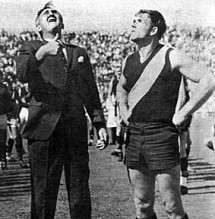
The Story of the Glenelg Football Club
(Peter Cornwall and John Wood) (1999)
Why be a Glenelg supporter? Why indeed? Objectively, it seems less a badge of pride than a sentence, a millstone, a curse from the abyss of Hell. We started life with a vote down at the Glenelg Council Chambers, when Glenelg was a half days buggy ride from Adelaide, on March 10, 1920. It made a debut in the SAFL, then the second tier, beating South Adelaide by a single point (for the uninitiated, the narrowest winning margin) in its first game. Then it entered the Big League, the (incongruously named) South Australian National Football League (SANFL).

Resilience was inculcated in the True Tiger Fan by Glenelg’s first 4 years in the Big Show – not a single win – surely a world record. Then slowly, slowly, battle-hardened players and fans became warriors others wanted to join, and in 1934, came a howling wind from Holdfast Bay.
From nowhere they came, 100 to 1 against, and they beat Port Adelaide in the Grand Final (akin to the Superbowl) by a goal and a bit, a team who had almost a lien on the Premiership trophy, who’d beaten us by 30 accumulated goals in the 2 matches against them earlier that year: an abject lesson and inspiration to all people, not just fans – you can succeed, despite unanimous critical animosity, overwhelming public apathy, universal official hostility…and that when you’re going through hell, keep going.
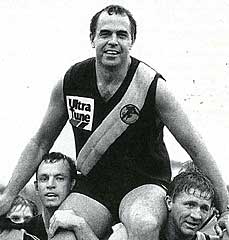 And in the final analysis, that is Glenelg: a pesky, unloved bunch of perceived silvertails from the beach, not often Premiers, but good for action…great for action, on or off the field.
And in the final analysis, that is Glenelg: a pesky, unloved bunch of perceived silvertails from the beach, not often Premiers, but good for action…great for action, on or off the field.
After that first Premiership, the Bays had a hangover for a few decades and despite coming close on several occasions, not till Neil Kerley barged into the role of senior coach and turned a team of drifters into titans did a 40 year gap (between their first Premiership and their second) close, in a nail-biting war of attrition that climaxed the brilliant season of 1973.
The subsequent years showed how the Tigers developed into great competitors who tended to crash through and then crash, usually enigmatically, and usually at the final hurdle (Grand Final losses in 1974, 1975, 1977, 1981, 1982, 1987, 1988, 1990, 1992 and 2008).
Glenelg, a comparative minnow, decided (typically) to go after Port, the heavyweight of the competition. Eventually, their rivalry would extend beyond the game to Boardrooms and Court rooms, epitomised by the unorthodox playing methods of David Granger.
And Glenelg eventually cut through again in the glorious mid 1980s. Graham Cornes returned to the fold and managed his talented list with skill and smarts, achieving the back-to-back triumph of the 1985 and 1986 Premierships.
You can learn all this and more, recounted in loving and painstaking detail, in Pride of the Bay, the best book about an Australian Football Club ever written.
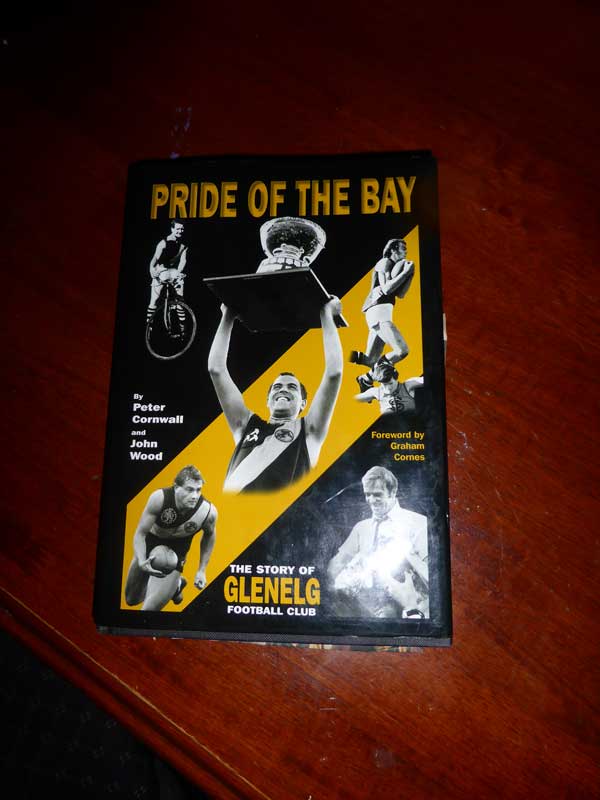
P’s popular edition – the special edition, bound in calfskin and blocked in gold, is kept in a safe place
From the early social history of Glenelg (the historical fount of South Australia) to the genesis and flourishing of the region’s footy team, growing into a powerhouse of the competition and winner of some of the greatest games in the sport, this book is everything you want it to be. It is so rich in facts and so very well written that you can open it at random and start reading.
But The Varnished Culture recommends that you read it from go to whoa.
The book’s concluding chapter, “A Changing World,” covers the uncertain 1990s when newly created South Australian franchises entered the national competition. The hybrid entrant, the Adelaide Crows, started up in 1991 and took away Glenelg players and Glenelg officials, leaving the Bays eviscerated. And it showed on the field, despite plucky soldiering on through the decade. Port Power, a confected straw man based on Port Adelaide FC, went national in 1997 and plucked the two Cornes boys, Chad and Kane, leaving the SANFL competition, and Glenelg in particular, to contemplate a new paradigm where the local teams became a sort of talent deli for the overpaid teams in the Show (AFL).
But the outrages and arrogance of the National competition aside, Glenelg grinds on towards its centenary and we look forward to an updated edition of this great book. Perhaps we might have a 2020 treat to read in addition, as Mr Cornwall hinted at a recent function?
Continue Reading →
Seveneves
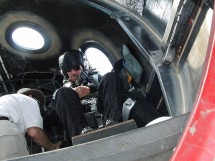
Neal Stephenson
Now, before we start…..is there anyone here who has not read Stephenson’s “Cryptonomicon”, “Snow Crash”, “The Baroque Cycle” and “The Diamond Age”? If so, please just take some time. Go out and beg, buy, borrow or download them…all of them…and read them while the rest of us wait…..
Welcome back. As promised, the rest of us waited here because we wanted to be sure that everyone has read the best of Stephenson before we proceed. If the first Stephenson I met had been “Seveneves” (or “Anathem” for that matter), I just might never have read Stephenson again – and that would be a great, great shame. Imagine if “Signs” or “The Village” were the first M Night Shalayam movie you had seen – it would be the only one, wouldn’t it? You would never give (the excellent) “The Sixth Sense” a chance.
SPOILER ALERT
Here comes the damning with faint praise – it is not that “Seveneves” is a bad or boring book. It is a page-turner and has some beautiful ideas – the Cloud Ark, swarms of miniature robots, the bejewelled ring, the Eye, the Cradle, space gliders, crow messengers flynks and so on…. but but but. Overall it seems thin, holey and unresolved. It’s just not special.
My seven Complaints:-
CHARACTERS
There are too many, interchangeable characters. I started a list so that I could differentiate the characters on Izzy, but there was no need. After a while I simply didn’t care who got lost on a space walk.
The only person I really wanted to know about – Sean Probst – a sort of Richard Branson on propellant, does much of his work off-stage and then carks it.
The group of seven in the third part are, as one charater says, a ragtag bunch. Like a Hollywood superhero combo they are an interesting interracial motley bunch of diverse warriors – a Neanderthal type, a lithe dark-skinned girl with green eyes, a white man who would be handsome but for the awful scars, and so on…fill in the blanks.
CREDIBILITY
The Earth burns not with a bang, but a whimper. Where are the throngs of desperate, violent refugees? Remember the evacuation from Saigon? One minor insurrection and three stowaways are just lazy, Mr Stephenson.
Would those left behind to burn go on carefully selecting their best and brightest to go into space to (maybe) survive? Would the doomed simply get on with their lives as normal, working to save the select few? Would the billions of earthlings who are about to become barbecue sausages keep on going to work everyday for no reason? Would they truly be comforted because the human species will go on in space or somewhere or not at all? Who would care?
Why don’t Doob’s new wife and his children seem to mind at all that he is going off into space to an uncertain future while they stay for a certain roasting?
Why are people as hopelessly underqualified as Ivy and Dinah put in vitally important positions in this most vitally important diaspora of all time?
Why don’t the Reds just kill the Diggers?
Why don’t the cramped and unhappy habitués of the Ring all flock down to New Earth on the elevator? An attempted mass evacuation in reverse.
CIVILIZATION
How do the Pingers evolve into amphibians in only 5,000 years, whereas the Diggers do not develop into mole type creatures? How come everyone speaks recognisable English after 5,000 years of separation?
CONTRIVANCE
With another nod to Hollywood, Stephenson very disappointingly has the lithe dark-skinned girl with green eyes get naked now and then for no particular reason (none of the men do).
CANNABALISM & THE CURSE
Aida’s proclamation isn’t so much a curse. And would high-tech space dwellers really be worried about a bit of cannibalism among starveling refugees 5,000 years ago?
CONSISTENCY
This is evocative….
“The third or fourth time Kath Two saw this tower it was from a distance of perhaps a hundred meters. She was gazing at it straight down one of those narrow streets. On its upper story it had a row of arched windows, looking out in all directions. Warm light was shining out of those windows, and she could see people sitting at tables, drinking and talking and eating and reading. All of those activities sounded good to her, and she entertained a hope that it might be some kind of public house – not a private club.
The entrance was not obvious, but she found it around to the right side, where a mousehole had been cut into the metal matrix in which the rock was embedded. The tunnel angled upward and curled around, becoming a spiral stair partly obscured by rusticles the size of small trees. Actual candles burned in niches. One turn of the helix took her out of the metal and into the stone; two took her to an arch-topped door of real wood, unmarked except for a wrought-metal door Knocker in the shape of a bird with a heavy curved beak Hand-forged feathers of black iron and palladium made it grizzled. Through the door she could feel warmth and hear conversation.
She reached for the knocker, unsure yet whether the place was meant to be public or private. then suddenly she was conscious of the scrap of paper in her hand. She stretched it out under the light of the nearest candle.
THE CROW’S NEST
SOUTH CRADLE.”
…..but why are we suddenly in Rivendell? The first part of the book is sciency, fascinatingly so. The second part will intrigue those who are interested in, and know something about, space flight. The third part has these lovely, fantasy aspects but it doesn’t all hang together. Although the third part is TVC’s favourite part, most reviewers like it the least.
CONCLUSION
Remember that stirring march toward the sign-posted skyscraper at the end of “The Diamond Age”? The breathtaking unfurling of the screens in “Snow Crash”? There’s nothing like that here. Rather there’s a pointless, messy fight and things end all of a sudden – wait for the sequel. Sadly, I won’t be rushing out to beg, buy, borrow or download it.
Continue Reading →Mollie Makes

If Mollie Makes were a woman she would own “Millie’s”, a quirky organic vegan café. The cafe, her house and her daughter Charlie* would all be decorated in a quirky retro, minimalist style featuring lots of polka dots and woodland animals. On Sundays Mollie Makes would dye her severe bob black or purple, pop on her quirky red-rimmed glasses and cycle with Charlie to roller derby practice.
The magazine is as worthy as that – heavy on the Scandanavian look, white walls, foxes, deer, owls, recycled furniture and dots. The projects are usually at the easy skill-level. Of course beauty is in the eye of the needle, but to this crafter the Mollie Makes projects are too often offputtingly err… ugly. Perhaps I just don’t understand and should hang out at Millie’s for a while.
Not attractive to this crafter…..
Some projects are better… (but note the bluebirds and rabbits which apparently infest England).
Mollie Makes does differ from most craft magazines in that the pieces about people are actually interesting and readable. It also always has a kit attached to the cover – which is a nice extra.
* Charlie was born a boy but boys don’t wear hair bows and coloured wellingtons, so Charlie is a girl now. As far as her mother is concerned.
VERDICT – buy it now and then.
Continue Reading →
